Comparing Solar Energy Costs Vs Traditional Energy Bills
The financial implications of solar energy compared to traditional energy bills present a complex scenario. Solar installations require an upfront investment, yet they offer potential long-term savings and stability. Conversely, traditional energy bills can be unpredictable due to fluctuating rates and hidden fees. This raises questions about the true cost-effectiveness of each option. What factors should consumers consider when making this important decision?
Understanding Solar Energy Costs
As the demand for renewable energy sources increases, understanding solar energy costs becomes essential for consumers and investors alike. Solar energy costs encompass several components, including initial installation, equipment, maintenance, and potential incentives. The initial investment often involves purchasing solar panels, inverters, and mounting systems, which can vary based on quality and brand. Additionally, installation costs may fluctuate based on the complexity of the setup and local labor rates. Over time, consumers can expect savings on energy bills, as solar systems typically reduce reliance on traditional power sources. Incentives such as tax credits and rebates can also considerably lower upfront costs, making solar energy an increasingly attractive option for those seeking sustainable energy solutions while managing expenses effectively. Furthermore, investments in renewable energy have been reaching unprecedented levels, further driving down costs and increasing accessibility for consumers.
Analyzing Traditional Energy Bills
Analyzing traditional energy bills reveals vital insights into monthly expenses and the factors influencing rate variability. Customers often encounter hidden fees that can greatly impact their overall costs. Understanding these elements is imperative for making informed decisions about energy consumption and potential alternatives. Additionally, recognizing the potential for sustainable energy sources can help consumers reduce their overall energy costs and environmental impact.
Monthly Energy Expenses
How do traditional energy bills reflect the true cost of monthly energy expenses? These bills provide a thorough breakdown of consumption, outlining the total energy used and the associated charges. Typically, they include fixed costs, which account for infrastructure maintenance, as well as variable costs that fluctuate based on usage. The bills often detail additional fees, such as taxes and surcharges, which can greatly influence the total amount due. In addition, customers may notice seasonal variations in their energy expenses, reflecting changes in consumption patterns. By analyzing these components, individuals gain insight into their energy habits and financial responsibilities, enabling them to make more informed decisions about their energy use and potential alternatives like solar energy.
Rate Variability Factors
While various factors influence energy rates, understanding these elements is essential for consumers seeking to manage their monthly expenses effectively. Rate variability in traditional energy bills can stem from several key components, including geographic location, seasonality, and energy demand fluctuations. Regions with higher energy demand may experience increased rates, particularly during peak usage times, such as summer months. Additionally, the source of energy generation—whether fossil fuels or renewable resources—can impact pricing structures. Regulatory changes and market competition also play significant roles, as utility companies adjust rates based on operational costs and investments in infrastructure. By recognizing these factors, consumers can better anticipate fluctuations in their energy bills and make informed decisions about their energy consumption and budgeting strategies.
Hidden Fees Analysis
What unexpected costs might consumers encounter on their traditional energy bills? Many individuals overlook hidden fees embedded within their monthly charges. Common examples include service fees, administrative costs, and infrastructure surcharges, which can considerably inflate the overall bill. Additionally, utility companies may impose penalties for late payments or excessive usage during peak times. These charges often lack transparency, making it challenging for consumers to understand their true energy expenses. Moreover, regional taxes or environmental fees may also apply, contributing to the final amount due. As a result, traditional energy bills can become less predictable, complicating budgeting efforts. Consumers must carefully review their bills to uncover these hidden fees and evaluate their overall energy costs effectively.
Initial Investment and Installation Expenses
Although solar energy presents a sustainable alternative to traditional power sources, the initial investment and installation expenses can be significant. Homeowners may face costs related to solar panels, inverters, mounting systems, and labor for installation. Prices can vary widely depending on system size, equipment quality, and geographic location. Additionally, there may be auxiliary expenses such as permits, inspections, and potential upgrades to home electrical systems. While some programs offer incentives or rebates to offset these costs, many consumers still grapple with the upfront financial burden. This initial expenditure can deter individuals from shifting to solar energy despite its long-term benefits. Understanding these expenses is essential for those considering solar as a viable energy solution. Embracing minimalism in lifestyle can help individuals prioritize their financial investments, including those in renewable energy options like solar.
Long-Term Savings and Payback Period
In evaluating solar energy costs, understanding long-term savings and the payback period is essential. The initial investment can be offset by significant reductions in energy bills, which contributes to a favorable payback timeline. Analyzing these factors helps consumers assess the financial viability of solar energy systems over time. Additionally, the integration of AI in healthcare has shown how technology can enhance efficiency and reduce costs, which may parallel the advancements seen in the solar energy sector.
Initial Investment Comparison
While the initial investment for solar energy systems may appear substantial, a thorough evaluation reveals significant long-term savings and a favorable payback period. Homeowners typically face upfront costs involving solar panels, installation, and necessary equipment. However, various financial incentives, such as tax credits and rebates, can substantially reduce these costs.
When examining total expenses over time, solar energy systems often lead to reduced electricity bills, contributing to long-term savings. Additionally, the average payback period for solar investments ranges from five to ten years, depending on local energy prices and system efficiency. As energy prices continue to rise, the attractiveness of solar investments strengthens, making them a financially sound choice for many households in the long run.
Energy Bill Reduction
How considerably can solar energy impact long-term savings on energy bills? The shift to solar energy can lead to significant reductions in monthly energy expenses. Homeowners and businesses alike often experience lower utility costs after installing solar panels, resulting in substantial long-term savings. Over the lifespan of a solar system, typically 25 years or more, these savings can accumulate to tens of thousands of dollars. Furthermore, as utility rates continue to rise, the savings from solar energy become increasingly pronounced. Additionally, solar energy systems usually require minimal maintenance, further enhancing their financial benefits. Consequently, the shift to solar not only lessens reliance on traditional energy sources but also offers a viable pathway for economic relief in the long run.
Average Payback Timeline
Typically, homeowners can expect a payback period of 5 to 10 years after installing solar panels. This timeline varies based on several factors, including the initial cost of the solar system, local energy prices, and available incentives. In regions with high electricity rates, the payback period may be shorter, as savings on monthly energy bills accumulate more quickly. Additionally, federal and state tax credits can further reduce upfront expenses, enhancing overall savings. After the payback period, homeowners benefit from reduced energy bills, often leading to significant long-term financial gains. With solar energy becoming increasingly affordable and efficient, many find that the investment not only pays off but also contributes to environmental sustainability.
Incentives and Tax Credits for Solar Installation
What factors influence the financial viability of solar installation? One significant aspect is the availability of incentives and tax credits, which can substantially reduce upfront costs. The federal government offers a solar investment tax credit (ITC), allowing homeowners to deduct a percentage of solar system costs from their federal taxes. Many states and local governments also provide additional rebates, grants, and tax incentives that additionally enhance affordability. Moreover, utility companies may offer performance-based incentives for solar energy generation. These financial benefits can shorten the payback period and improve the overall return on investment. As a result, potential solar buyers are encouraged to research available incentives in their region to maximize savings and guarantee a more financially viable installation. Additionally, understanding the implications of economic control in energy markets can help consumers make informed decisions about their energy choices.
Environmental Impact and Sustainability Benefits
Although the primary motivation for many homeowners to install solar panels is financial savings, the environmental impact and sustainability benefits of solar energy are equally significant. Solar energy production greatly reduces greenhouse gas emissions compared to traditional fossil fuels, contributing to cleaner air and a healthier environment. By harnessing sunlight, solar panels minimize reliance on non-renewable resources, promoting energy independence and sustainability. Additionally, solar installations often lead to reduced water consumption, as they require minimal water for operation compared to conventional power plants. The widespread adoption of solar energy also supports job creation in the renewable sector, fostering economic growth while addressing climate change. Overall, the shift to solar energy represents an essential step toward a sustainable future.
Making the Decision: Solar Vs Traditional Energy
When comparing solar energy to traditional energy sources, homeowners must weigh various factors, including long-term savings, environmental benefits, and energy independence. The financial aspect is essential; while solar installation requires an upfront investment, it often leads to reduced utility bills over time. In addition, solar energy provides a hedge against fluctuating energy prices. Environmentally, solar energy contributes to reduced carbon footprints, appealing to eco-conscious consumers. Moreover, solar installations can enhance energy independence, decreasing reliance on fossil fuels and traditional grid systems. Homeowners must also consider local incentives, financing options, and the potential increase in property value. Ultimately, the decision hinges on individual priorities, balancing immediate costs against long-term advantages and personal values concerning sustainability.
Frequently Asked Questions
How Do Solar Energy Systems Affect Home Resale Value?
Solar energy systems generally enhance home resale value, appealing to environmentally conscious buyers. Research indicates that properties with solar installations often sell faster and at higher prices, reflecting growing demand for sustainable energy solutions in real estate markets.
What Maintenance Is Required for Solar Panels?
Maintaining solar panels involves regular cleaning to remove dirt and debris, periodic inspections to check for damage, and ensuring the inverter functions properly. This upkeep maximizes efficiency and prolongs the lifespan of the solar energy system.
Can Solar Energy Power My Home During Outages?
Solar energy can power homes during outages if equipped with a battery storage system. This allows stored solar energy to be utilized when the grid fails, providing a reliable power source during emergencies or disruptions.
How Do Energy Storage Solutions Work With Solar?
Energy storage solutions, such as batteries, capture excess solar energy for later use. During non-sunny periods or outages, stored energy can power homes, providing a reliable energy source and enhancing the overall efficiency of solar systems.
What Happens to Solar Panels at the End of Their Life?
At the end of their life, solar panels can be recycled, recovering materials like silicon and metals. Alternatively, they may be disposed of in landfills, raising concerns about environmental impact and sustainability within the solar industry.
Conclusion
In summary, while the initial investment in solar energy may seem intimidating, the long-term financial benefits, stable costs, and potential incentives present a compelling case for consumers. Compared to traditional energy bills, which often come with unpredictable expenses and hidden fees, solar energy emerges as a more sustainable and cost-effective choice. By carefully considering these factors, individuals can make informed decisions that not only benefit their wallets but also contribute positively to the environment.



